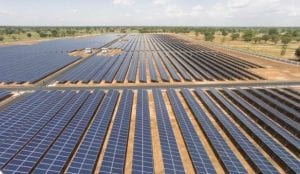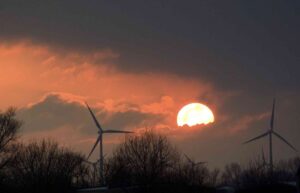The Australian solar industry has raised more concerns about the Abbott government’s review of the renewable energy target, noting that “nothing has happened” since the terms of reference and its controversial panel were announced a month ago.
The Australian Solar Council – the peak body for Australia’s solar sector – says it wants Prime Minister Tony Abbott to outline what is happening to the renewable energy target before the WA Senate re-run in early April. The outcome of that count could be crucial for any legislation diluting or canning the RET to get through parliament.
ASC chief executive John Grimes said Australian voters had been left in the dark about the future of the RET.
“Exactly one month after another review of the Renewable Energy Target was announced, there has been complete silence from the Government on the Review. There have been no timelines, no commitments and no consultation.”
The RET review, which is being led by climate change science sceptic Dick Warburton, and is being managed by Abbott’s office, has a web page that has not been updated since February 25, even though the review is due to be finished mid year.
Concidentally, the government this week called for tenders from energy analysts to provide “Electricity Market Modelling and Analysis services” to inform the RET review. The report, it says, it due to be finalized by mid July.
However, there have been no details on how, if and when the review panel will take submissions on its review, despite the tight deadline. A spokesperson for the Industry Minister Ian Macfarlane, whose portfolio covers energy, said the process for calling for submissions is still being finalized and will be made public “when it’s ready to go.”
The appointment of Warburton and other panel members, and its housing within Abbot’s secretariat, has raised fears the the outcome has been pre-determined.
“It appears a high level decision has already been made to slash the RET or axe it altogether, and Australians won’t be told until after the WA election on April 5,” Grimes said.
“Australians love solar so the government knows gutting the Renewable Energy Target will cost them votes at the Senate election,” ASC chief executive John Grimes said.
The government is under intense pressure from within its own ranks, and from industry groups and fossil fuel generators, as well as state government owners, to kill or dilute the RET. The push is due to the impacts of more renewables on the profits of incumbent fossil fuel generators, and on antipathy to wind farms.
However, analysis to be released by leading solar research firms SunWiz and Solar Business Services this week suggests that the uptake of large-scale PV is highly sensitive to the trajectory of the LRET, the large scale component of the target.
“Large-scale commercial PV is expected to be one of the least-cost sources of LGCs by the end of the decade, and utility-scale solar projects are also likely to become viable in 2019 & 2020, so long as healthy LGC prices remain,” SunWiz director Warwick Johnston says.
“However, if the target is reduced then large-scale PV will be most affected, because there will be insufficient LGC demand when PV becomes competitive. In essence, a cut to the LRET target will wipe out the large-scale solar sector, and foreign companies will immediately divest from Australia.
“By contrast, it may be that delaying the 41,000 GWh trajectory out to 2025 would delay commercial PV but ultimately favour it, because it will give solar a longer period in which it as a LGC supply can be
competitive with wind.”
Johnston says the flow-on effects from any adjustment to the LGC target will be compounding. The 2014-2018 forecast released this week by SunWiz and SolarBusinessServices demonstrates the reliance of utility-scale PV upon ARENA funding.
As ARENA has a limited pool of funds to utilise in bridging the ever-narrowing competitiveness gap for early projects, then a reduced LGC price will reduce project competitiveness, meaning ARENA needs to use more funds on each project and can thus support fewer projects.
The ASC has launched a campaign to encourage householders hit hard by rising power bills to vote for parties that support solar and the Renewable Energy Target in the WA Senate election.
It has hired the former creative talent behind the mining industry’s anti-tax campaign to try and make solar an election issue. It is seeking commitments from all parties to maintaining the existing RET and will publish a “solar scorecard” later this week.










